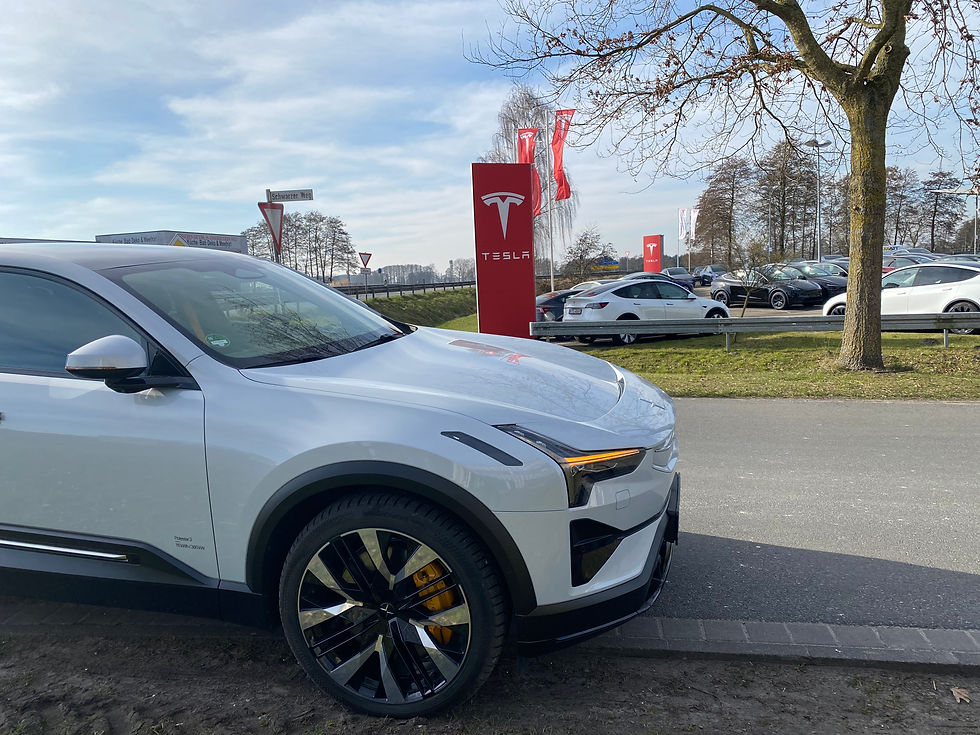The worst of times could be the best of times for Asian OEMs... From our latest study
- Matthias Schmidt

- Oct 7, 2022
- 3 min read
While Elon Musk, known for self-assured hubris, recently remarked that Tesla's German plant is currently a gigantic money furnace, burning through cash at an alarming rate, the Grünheide facility is likely to be joined by more European furnaces this winter, fuelled by rocketing energy prices. Despite European governments increasingly trying to shelter from the storm under €200 billion invincibility shields (Germany's recent controversial "double ka-boom" energy price stability package), they are likely only to dampen price rises than offer complete protection. The UK's automotive society (SMMT) said their vehicle and component members are already facing collective energy bill rises of more than £100 million (€112mn) during the past 12 months. Despite temporary price caps, or 10% voluntary electricity consumption reduction targets (EU), fears remain that even steeper increases are lurking. But could there be a winner in this?
Potentially, yes! Asian auto manufacturers, to be precise. Less exposed to energy price spikes in their domestic markets, Japanese, Chinese and Korean – and maybe even Vietnamese – could capitalise with competitive production costs. Assuming there is still demand in the region, which is expected to witness the weakest new car market since the last big energy crisis in the early 1980s – 10.2 million units in 1984 – a potential window appears to be opening. With industry fuel rationing one possibility or voluntary production shutdowns another – if further operation makes no business sense – the European business model may be heading for a brutal crash landing. European plants are currently rushing to produce as many components for other global plants now, to boost parts inventory before potential difficulties arise. R.I.P J.I.T Looking at the current picture; some of the best-performing OEMs across the West European car market are already Asian, with Toyota claiming the number two brand position during the opening 8-months and Hyundai/Kia volumes accounting for almost every tenth new car. With free trade agreements being handed out and ratified with a number of key nations such as Japan and South Korea over the past decade, it could be these motor manufacturing powerhouses that stand to benefit most, thanks to the zero per cent import tariffs to Europe as well as crucially being less exposed to the rises in energy costs. Chinese models, which still see a 10% tariff applied to passenger cars entering the 27-member EU region, may see this hurdle cleared through lower production costs, partially gained through early scaling in their domestic market, and increasingly lower energy prices compared to European production facilities. An added consequence could be the BEV/ICE parity level being reached earlier due to the high Asian component content of BEVs and high ICE European content.
However, short-term gains could spell long-term pains with the EU (CBAM) and US (IRA) already nervous and looking to raise stealth borders again. For EVs, this comes at a crucial moment as Japanese manufacturers such as Toyota, which recently unveiled an array of new BEV models, begin their BEV ramp-up, while Korean E-GMP-based models from Hyundai/Kia have seen both brands reach 100,000 new West European BEV models (12.3% market share) after just 8-months this year. Chinese brands such as BYD, Nio, FAW (Hongqi) and XPeng that have intelligently used Norway as a shop window, enabling them to build a European brand presence, boosted by positive column inches, are operating under different conditions as the 10 per cent import tax doesn't apply in the non-EU Nordic market. This perhaps explains the high prices unveiled by BYD last week for the three models it aims to begin delivering across Northern Europe later this year, raising questions if inflation was priced in? The compact Atto 3 crossover starts at €38,000 while the Han, – Mercedes EQE-sized – and Tang SUV begin at an identical €72,000. The Tang, available in Norway for one year, has accumulated 2,300 units. Other outside bets? Vietnam's VinFast, which tried to woo journalists with champagne and lobster lunches, and first-class trips to their Asian HQ last month (as reported by Bloomberg), could also see this as the opportunity to enter the region. Franchise dealers could become as crucial as ever to get these Asian upstarts rolling in Europe. Chinese OEMs will launch just under 10 Euro-destined models during the remainder of 2022.
With Tesla, rushing to expand its Chinese plant, and assuming they can navigate crowded RoRo shipping schedules, its German furnace could potentially be turned-down (despite weekly production rates hitting 2,000 p/w) as inflationary energy prices adds more fuel to the fire.
May also interest you: European Electric Car Market Jan-Jul 2022: China's electric car tiger about to bite? Latest European Electric Car Study preview 2022/07 click here for the story
*Western Europe 18 Markets: EU Member States prior to the 2004 enlargement plus EFTA markets Norway, Switzerland, Iceland, plus UK





Comments